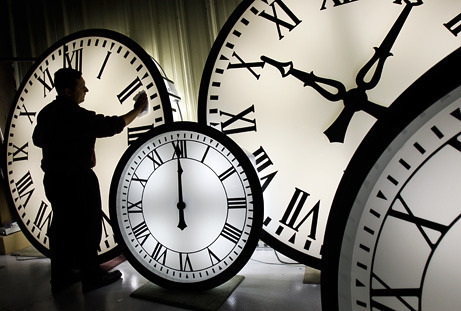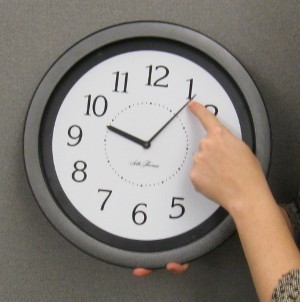Daylight Savings Time
Daylight Savings time, or Daylight Saving Time, is the process of adjusting the clocks twice a year to add more daylight time in the afternoons and less in the mornings. Daylight Savings Time has undergone many changes and thrown under much controversy in its history but it remains a vital part of our society today, all around the world. In this article, we will go over how Daylight Savings Time started, how it works, the pros and cons, and how Daylight Savings Time effects computers.
Origins and History
Daylight Savings Time was first proposed by an entomologist from New Zealand, named George Vernon Hudson, in 1895. Since then, many different countries have participated in one form of Daylights Savings Time or another. Daylight Savings Time has both benefits and drawbacks, however, and not all countries use DST or agree on the specifications for it. For example, Australia has a system for Daylight Savings Time that is so complicated, half of the country in 2007 adjusted their clocks on October 5th while Western Australia waited until October 26th to adjust their clocks.
Many people mistakenly accredit the invention of Daylight Savings Time and the changing of the clocks with Benjamin Franklin. While he did in fact realize that people in Paris were saving countless candles at the time by changing their clocks during the year, he did not do anything with this knowledge, as the standardization of time had not yet become a reality.
It was not until 1905 that Daylight Savings time was actually taken seriously. Inventor William Willett was the man who was responsible for inventing and advocating such changes in time in order to use the natural light of the sun more efficiently. The first recorded use of Daylight Savings Time came during April of 1916 when the Germans (and their occupied territories and allies) began to use Daylight Savings Time in order to make their armies maximize the number of daylight hours at their disposal and conserve vital heating oil and other fuels. Other counties in Europe soon followed Germany’s example; and in 1918 the United States joined the growing group of nations which practiced Daylight Savings Time and the changing of the clocks. It was not until 1966 though that Daylight Savings Time in the United States was officially standardized by the Uniform Time Act.
How It Works
Typically, Daylight Savings Time is a one hour shift either forward or backward on the clock. In Springtime, clocks jump an hour forward at 2:00 A.M. to 3:00 A.M. In Autumn, the clocks are set back an hour at 1:59 A.M. to 1:00 A.M. Clocks are usually adjusted during the weekend to lessen the effects the time change has on businesses and people in general. An easy way to remember the time change is that the clocks “spring forward” in the Spring and “fall back” in Autumn. The idea is to create an extra hour’s worth of daylight in the afternoons with the goal of consuming less energy on artificial lights.
Pros
1. For the past 30 – 40 years, tests have been done to establish whether or not traffic accidents were any different during Daylight Savings Time. The U.S. Department of Traffic determined there to be a 0.7% reduction while the Insurance Institute for Highway Safety says that there is a 1.2% reduction.
2. In the mid 1970s, the U.S. LEAA (Law Enforcement Assistance Administration) noticed a 10% – 13% drop in the rate of violent crimes when Daylight Savings Time was in effect. This effect seems to only make a difference in certain types of crime, however, and it may not be accurate to say these results would be the same in other parts of the country.
3. Retail outlets often see better business at times when Daylight Savings Time is in effect, as customers like to spend their afternoons walking around stores and shopping. Fortune magazine ran a story in 1984 that showed how the 7-Eleven franchise would gain an extra $30 million by extending Daylight Savings Time for another seven weeks. The National Golf Foundation also calculated that they would make an extra $200 million – $300 million by using the same seven week extension.
Cons
1. Some people, particularly businessmen, do not like Daylight Savings Time because it complicates their schedules. For example, meetings and travel times can be misunderstood due to the time difference. Also, important functions that are run by computer, such as billing programs and medical devices, can be interrupted by these changes. Some of these problems can be fixed or avoided but others may not. Issues like these arise every year due to Daylight Savings Time.
2. In 2007, Japan evaluated statistics for countries that use Daylight Savings Time in order to figure out if they would save energy by implementing it in their own nation. They performed a simulation that calculated all of the known factors involved and came to the conclusion that energy consumption would rise by 0.15% due to more people using their air conditioners and for longer periods of time. There was a 0.02% decrease in artificial lighting but it is obviously outweighed by the extra cooling factor. That leaves an extra 0.13% in energy consumption.
3. Also, Daylight Savings Time has a drastically negative impact on people and businesses who depend on sunlight for their livelihood, such as farmers and sports enthusiasts. In agriculture, it is best to harvest your crops after the dew on the ground and in the air evaporates, so when laborers show up to work earlier and leave earlier during the Summer, due to Daylight Savings Time, less work gets done.
Computers
Generally, computers update themselves every year based on the latest rules for Daylight Savings Time. As more and more technology becomes electronic, many people don’t even notice the time difference. Problems occur, however, whenever a committee decides to change the rules for Daylight Savings Time, such as changing the date of the time change or altering the amount of time that is affected. Not only is it complicated for average people to be informed of the changes, but it is highly expensive and time consuming to update all programs and computers to the rule change. Some estimates show that nearly a billion dollars is spent whenever the DST rules change, as can be witnessed in the 2007 DST rule change. If these programs were not updated, we would have all sorts of problems including time stamps on emails being incorrect, alarms not being set right, and some types of medical equipment could potentially harm the patient.



Comments - No Responses to “Daylight Savings Time”
Sorry but comments are closed at this time.